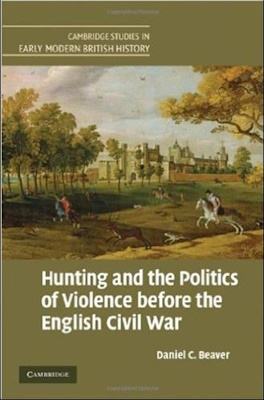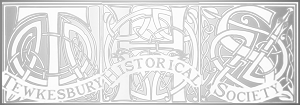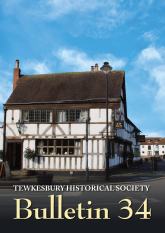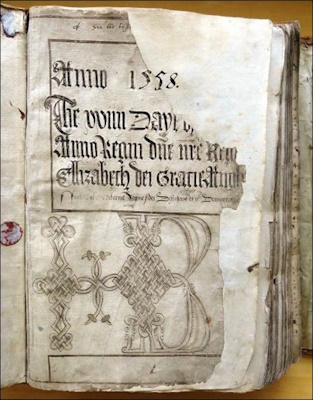Giles Geast Charity Account Book

featuring the Tewkesbury District
I have been studying the history of Tewkesbury and its surrounding parishes since the 1980s, when a cache of documents suggested that the local vicar’s reference to Charles II in a sermon as an “adulterer” and “fornicator” might offer some insight into ideas about the relationship between this local community and the kingdom. Only when I moved to Gloucestershire for my doctoral research did I come to appreciate my good fortune in choosing the northern Severn Valley: the settled landscape of hill, vale, and forest, with its small cities and towns, cut through by a river still not wholly civilized; the depth of surviving records for the corporation of Tewkesbury; and the people who could not have been more welcoming to a guest, studying a history to which he had no per sonal or familial connection. I first met Giles Geast under these circumstances, in which friendships and familiarity gradually turned the stories his record had to tell into personal ones.
Christopher Elrington broached the subject of publishing Giles Geast’s book in 1988, when he was serving as General Editor of the Victoria County History from his office at the Institute for Historical Research.5
Published in 2017
Daniel C. Beaver is an Associate Professor of History at Pennsylvania State University, USA.
to Expand
Figure 2: One of several ornate ‘JB’ monographs, signifying Bartley’s gift, shown here on the first folio of the manuscript. The given date of 1558 is a mistaken later addition, contradicted by the text of the document. [Author]
This achievement resulted in part from the annual ritual of accounting for the rents from the charity’s properties in Tewkesbury, for the expenses of repairing them, and for the delivery of their proceeds to working families from street to street and house to house in December each year. Giles Geast (based on the most common spelling, probably pronounced ‘Guest’), the founder of the charity and an experienced bailiff of the borough, had set aside three shillings and four pence [16p] in his 1558 will for the bailiffs of Tewkesbury and the officers of the charity, or feoffees, “to repast themselves withal” during this annual accounting.[3] Although their ‘repast’ at the New Inn in 1702 cost five times this much, the yearly ritual persisted for centuries in accord with the founder’s will.[4] However, it was Bartley’s scheme, and gift, in 1571 to see the account set down each year on one page of a single manuscript book. Previously, it had been written in a separate ‘boke’ for each year.
These accounts were copied into the new volume in 1571, but, like most early modern manuscripts, the ‘bokes’ themselves have not survived. We owe the magnificent account book that has come down to the present to Giles Geast’s political insight, setting up the borough’s oversight of his trust and to John Bartley’s simple but important administrative innovation; it is a kind of literate ordering that is central to the survival of the accounts and to the book’s meaning.
Geast Feoffees [Author]Click Image
to Expand
In 2017, the first complete printed edition of the Giles Geast Charity Account Book appeared in the Gloucestershire Records Series. This manuscript treasure has been known and used by local historians since the work of James Bennett in the middle of the nineteenth century, and it now stands among the most important of the public records in the Gloucestershire Archives as manuscript D 2688.[1] John Bartley gifted this fine, leather-bound book to the officers of the Geast Charity in 1571, while serving as one of the bailiffs of Tewkesbury.[2]
Over the ensuing 300 years the book served as a record of the charity’s annual accounts, as a civic record of Tewkesbury’s officers, and as the informal record for significant local, national, and international events, beginning with the defeat of the Spanish Armada in 1588. Bartley’s gift became a unique record of 44 Tewkesbury properties and those who rented them: a window on the politics of poverty from the sixteenth to the nineteenth centuries, and a fleeting glimpse of local attempts to make sense of Tewkesbury’s relationship to the wider world. In short, it comprises 350 years of the town’s social, economic, political, and cultural history – all between two leather covers.

featuring the Tewkesbury District
He suggested the idea of a complete edition, observing that local historians had mined the book for its chronicle of events and that its value for this purpose might draw attention to the importance of the document as a whole. Set aside at the time for financial reasons, one of the satisfactions of the current edition is its place in the vision of one of Gloucestershire’s (and Tewkesbury’s) finest historians. James Hodsdon revived the project for the Gloucestershire Records Series in 2010, and I have prepared this edition from a microfilm of the manuscript made for me by the (then) Gloucestershire Record Office in 1988. Among the manuscript’s challenges, questions remain about the precise locations of the Geast properties, such vernacular landmarks as the “Warkey/Workhey/Warkay Wall,” and other features of Geast’s history in the Tewkesbury landscape.[6]
Any communication from local residents and friends of the Tewkesbury Historical Society who can help to document these aspects of Tewkesbury’s history will be most gratefully received and acknowledged.
References
- The Feoffee Book, presented by Charles Hilton, is a partial transcription available for study on the Society’s Woodard Database.
- A bailiff was the equivalent of a modern mayor. Tewkesbury was granted a charter by Elizabeth I in 1574, which created the Common Council to govern the town, comprising two bailiffs and twelve principal burgesses. This Common Council continued until it was swept away by the Municipal Corporations Act of 1835, which incorporated the town and provided for the election of a mayor and an elected council. James Bennett, History Of Tewkesbury (Sutton, 1976 [1830]) p212 is the source of information on this topic but the existence of John Bartley as a bailiff in 1571 indicates that further research is needed into the period before the 1574 charter. [Editor]
- Feoffee is a medieval term from the feudal period; it refers to an owner of freehold land who uses its proceeds for a charitable purpose, as a trustee.
- This could have been the modern Hop Pole Hotel. In 1540 it was one of 26 properties leased by the Monastery, the Great Hospice (a hotel rather than a hospital) called the Crown or the New Inn. [Anthea Jones, THS Bulletin 3, 1994, p46]
- Christopher Robin Elrington, FRHistS, FSA, (1930-2009) was a historian, known primarily for his work with the Victoria County History. James Hodsdon is the author of The Court Books of the Manor of Cheltenham, 1692-1803 (Gloucestershire Record Series, 2010).
- In 1674 Sir Francis Russell gave ten alms-houses and the ‘Warkay Garden’ near Tewkesbury Abbey for the benefit of ten poor widows. These alms-houses were rebuilt in the nineteenth century and modernized as the ‘Russell Flats’, until recently exclusively occupied by six elderly ladies from the town. [Editor, using the Tewkesbury Consolidated Charities archive on Woodard Database]



![John Bartley’s 1571 gift to the<br>Geast Feoffees [Author]](/images/THS08563.jpg)
Comments